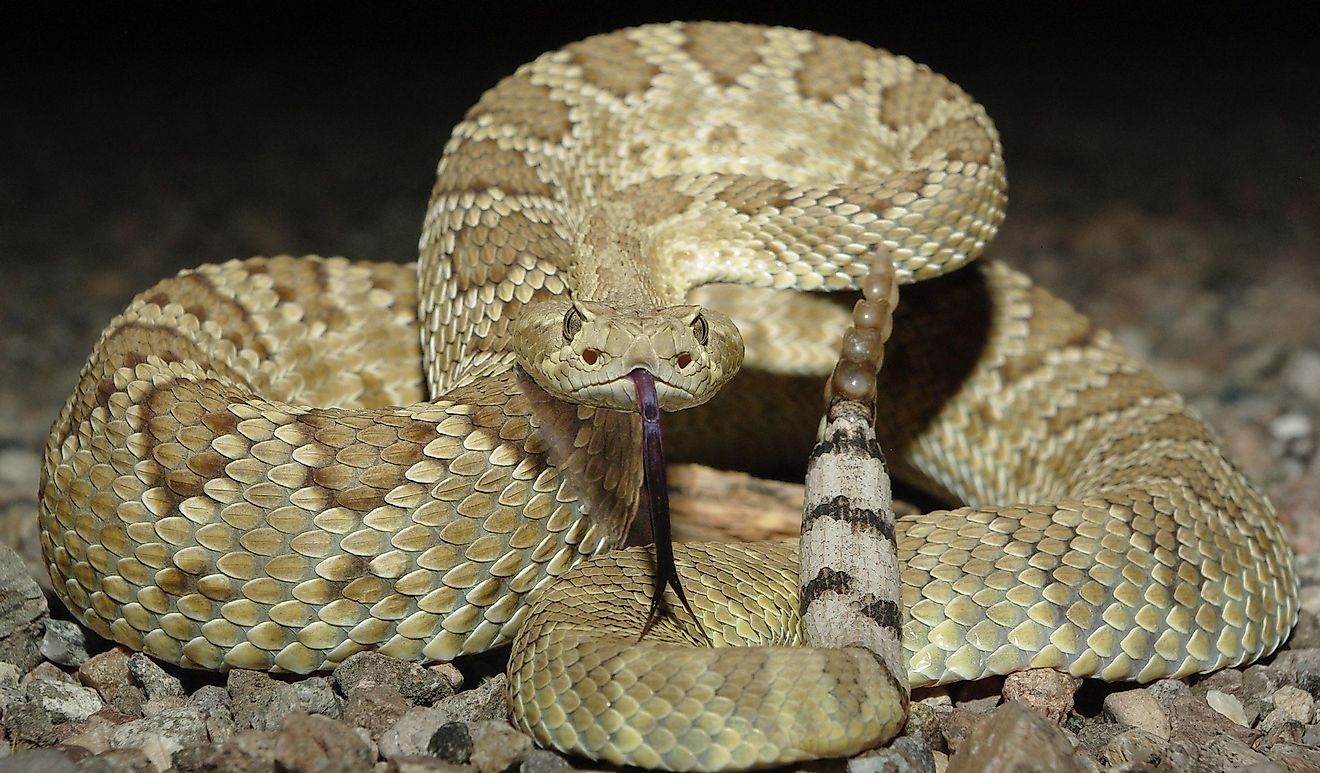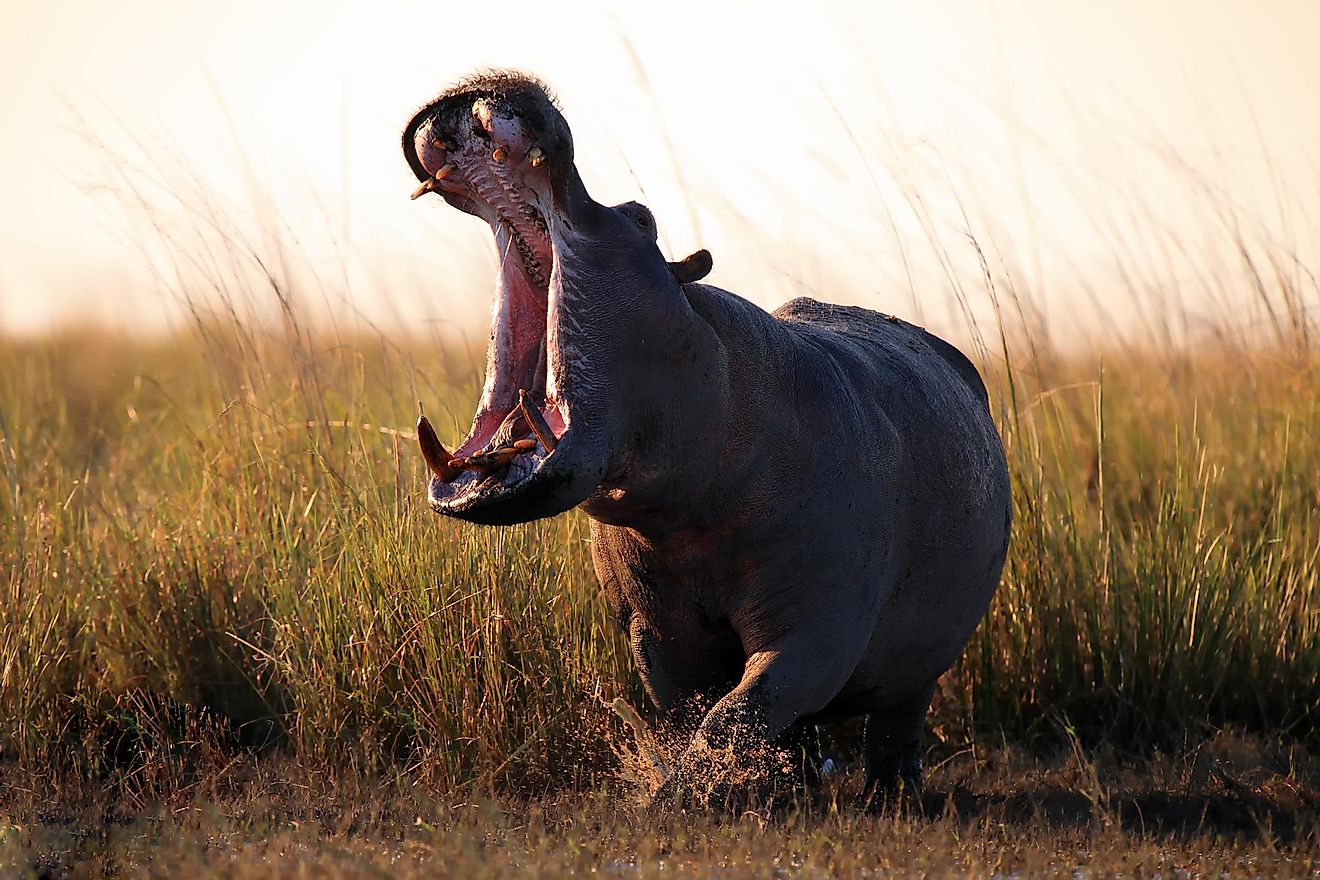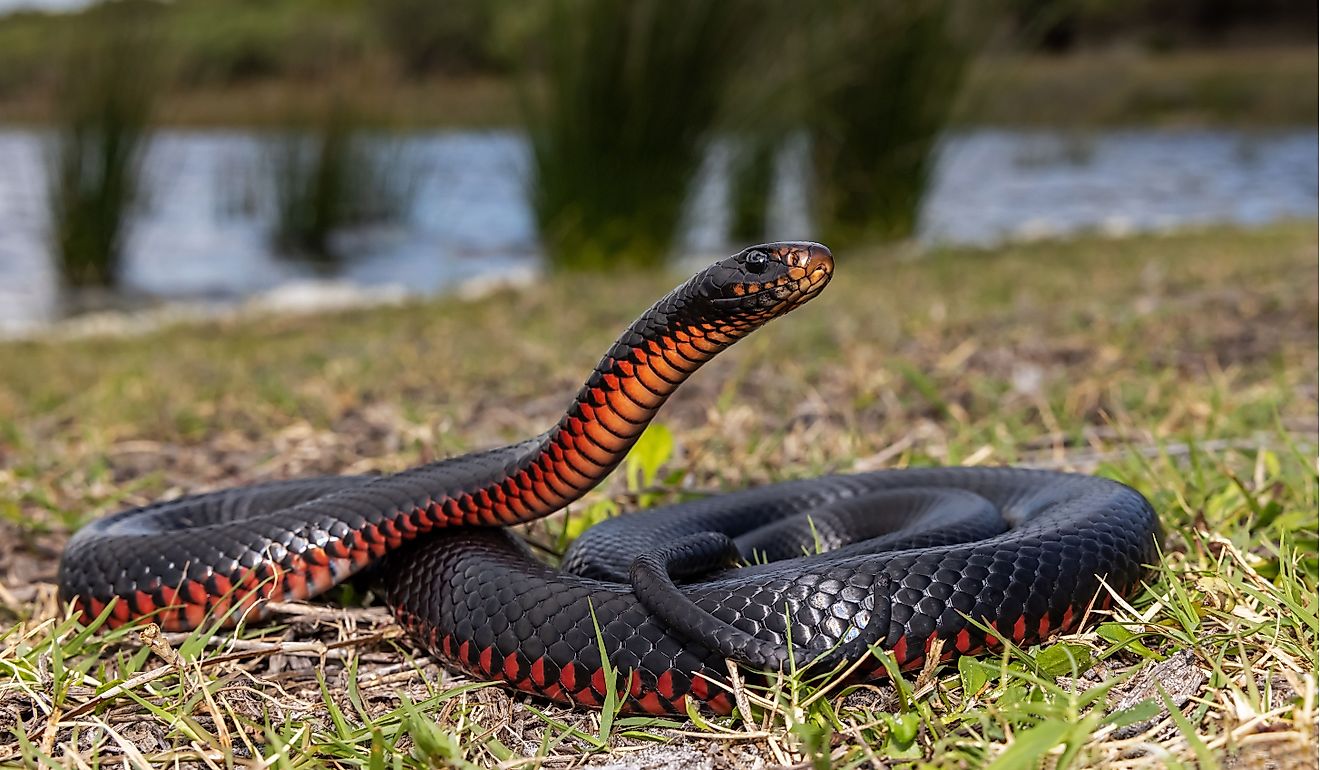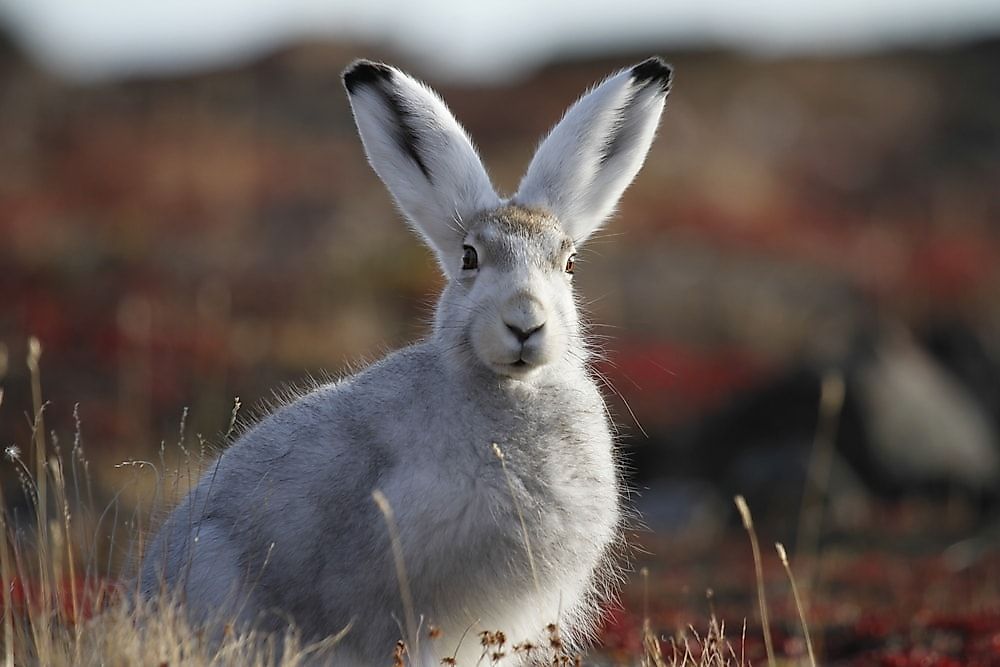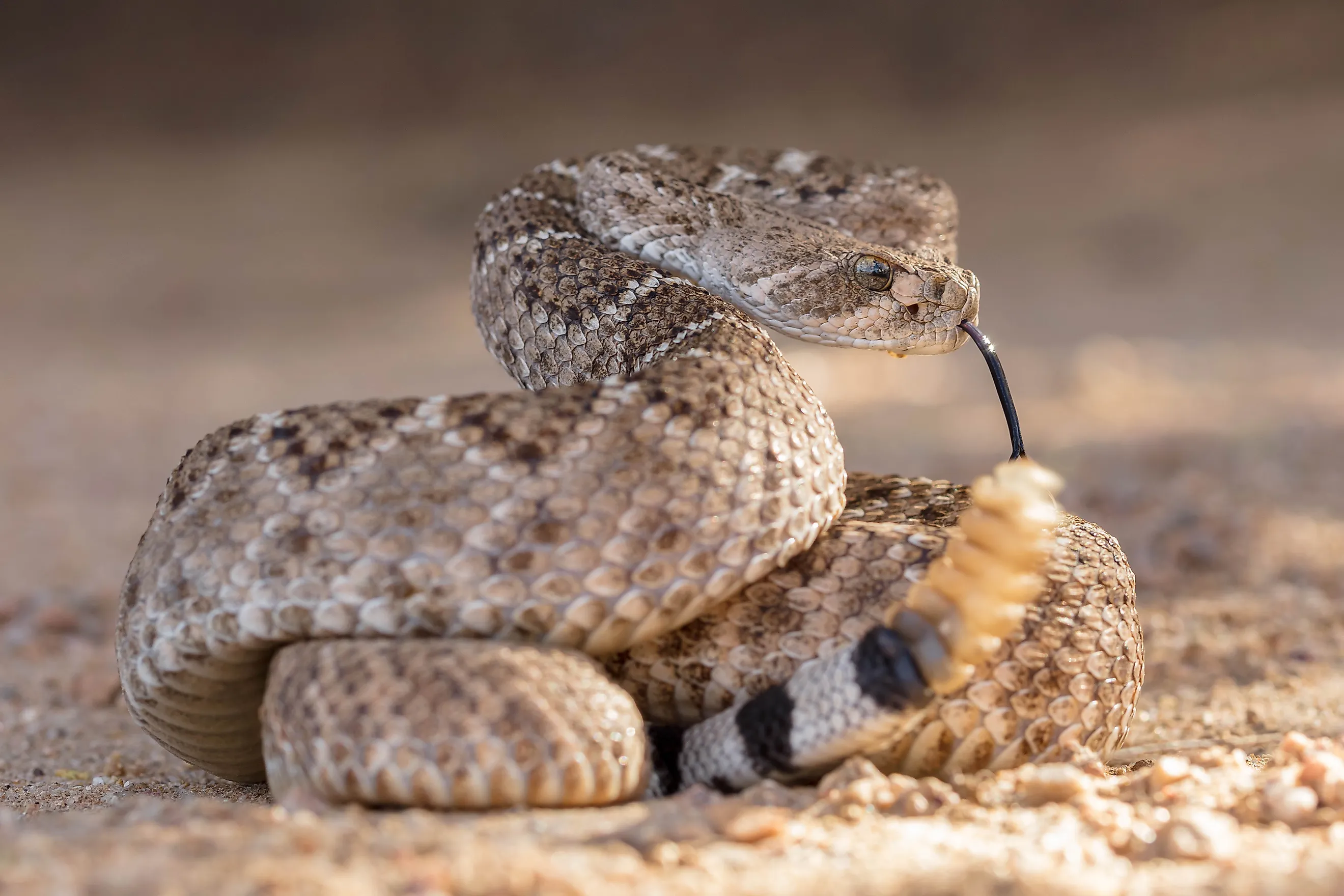
Snakes To Avoid In California
California is a land of sunshine, celebs, and desert highways that you drive on when you need to “find yourself” (at least in the movies). The Golden State is also home to some of the most sightworthy landscapes in the United States. The stoic Redwoods, stalwart Josuha Trees, and acres of vineyards make California a road trip for the books. And you would be amiss if you did not mention the wildlife. Mighty mammals like the bighorn sheep and grizzly bear and creeping desert critters like the California ebony tarantula and giant hairy scorpion all roam the majestic lands. But, of course, one should approach wildlife with respect and caution. This approach is especially true for venomous snakes. California is home to almost 50 snake species, of which nine are venomous. Here is a look at those nine species you should keep your distance from.
1. Western Rattlesnake (Crotalus oreganus)
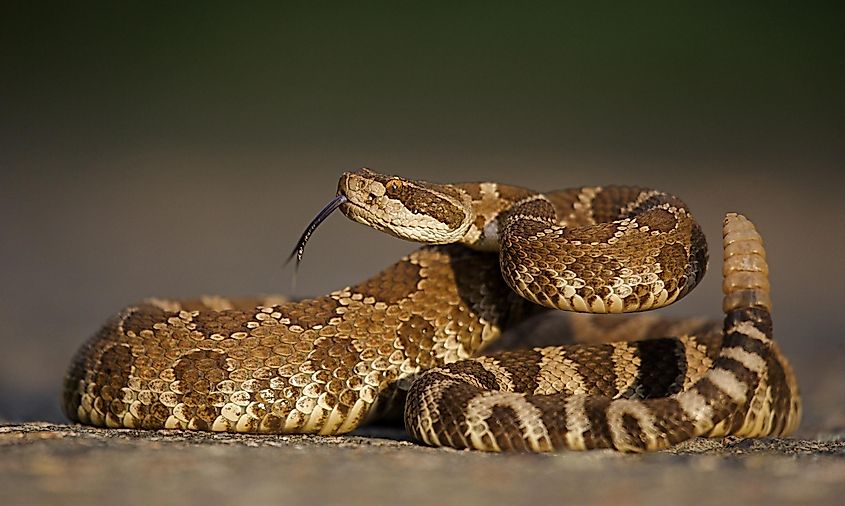
The Western rattlesnake, also known as the Northern Pacific rattlesnake, is the most widespread venomous snake in California. It inhabits diverse ecosystems, from coastal grasslands and oak woodlands to rocky mountain slopes and arid valleys. Coloration varies from olive green to brown or gray, with darker blotches along the back. Adults typically reach between two and four feet in length. Like other rattlesnakes, it warns potential threats with a distinct rattle before striking. Its venom is primarily hemotoxic, affecting blood and tissue, but fatalities are exceedingly rare thanks to modern medical treatment.
2. Southern Pacific Rattlesnake (Crotalus helleri)
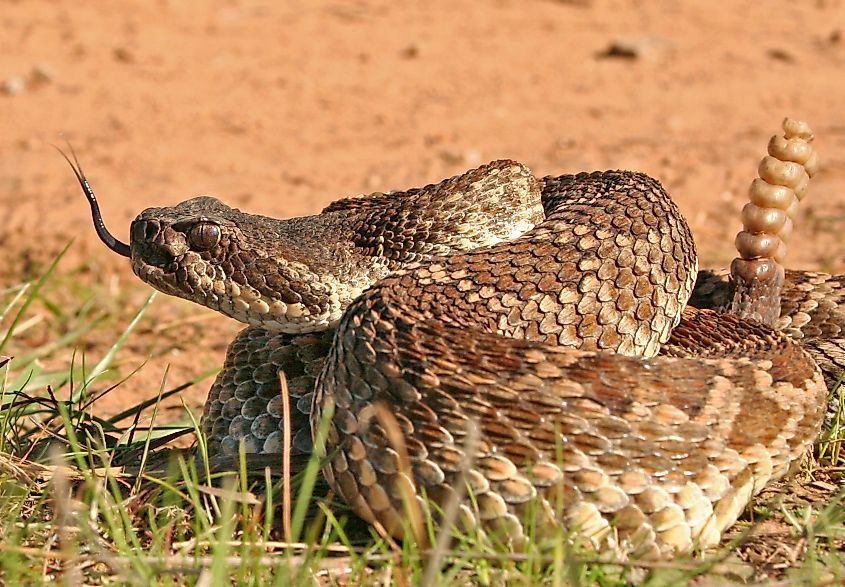
Common throughout Southern California, the Southern Pacific rattlesnake ranges from the coastal chaparral and grasslands to mountain foothills and desert fringes. This species has a dark brown or grayish body with distinct diamond-like blotches and a heavy, triangular head. Adults average around three feet long but can reach four feet in some regions. Interestingly, venom composition varies geographically, as coastal populations sometimes possess neurotoxic venom, while inland populations have primarily hemotoxic venom. Despite its reputation, this snake avoids confrontation and strikes only when surprised or cornered.
3. Mojave Rattlesnake (Crotalus scutulatus)
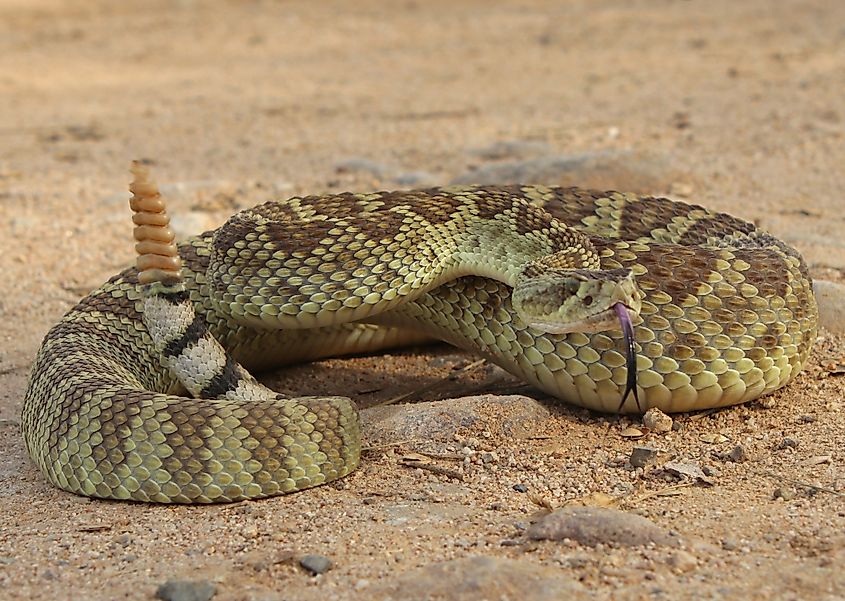
The Mojave rattlesnake is infamous for possessing one of the most potent venoms of any North American snake. Found primarily in southeastern California’s deserts, including the Mojave and parts of the Colorado Desert, it thrives in sandy flats, creosote scrub, and open plains. It resembles the Western Diamondback but has narrower white tail bands and a greenish or light tan hue. The Mojave’s venom contains a powerful neurotoxin that can impair the nervous system, making bites medically serious. However, encounters are rare because the snake inhabits remote desert regions and typically avoids humans.
4. Western Diamondback Rattlesnake (Crotalus atrox)
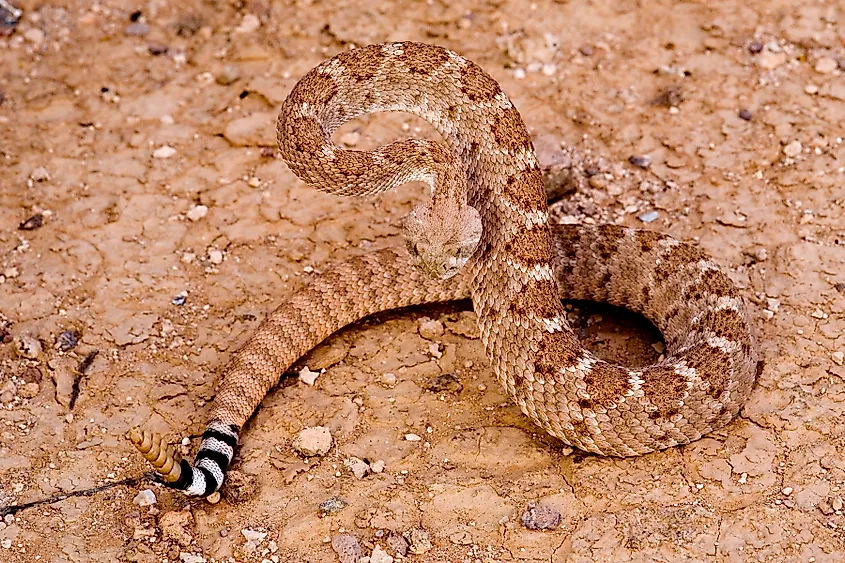
The Western Diamondback rattlesnake is a large and formidable species that occurs mainly in the extreme southeastern corner of California, near the Colorado River and along the Arizona border. Recognizable by its distinct diamond-shaped dorsal pattern and bold black-and-white tail rings, it can grow to over six feet long, making it one of the largest rattlesnakes in the United States. Preferring arid desert scrub and rocky canyons, it spends much of its time hidden in burrows or under rocks. The Western Diamondback’s venom is strongly hemotoxic and can cause tissue damage, but it rarely poses a fatal threat when treated promptly.
5. Sidewinder Rattlesnake (Crotalus cerastes)
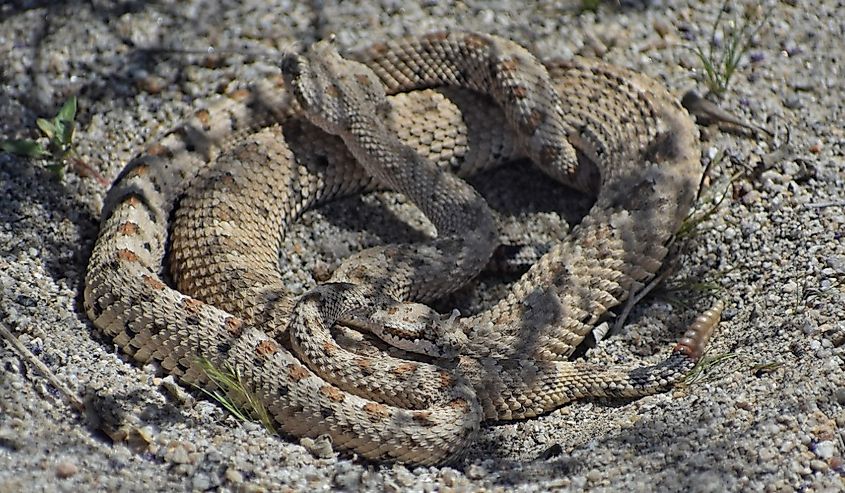
Named for its unique sideways form of locomotion, the sidewinder rattlesnake is a fascinating desert dweller found throughout the Mojave and Colorado Deserts of southeastern California. Its pale, sandy coloration and small horn-like scales above each eye allow it to blend perfectly into its environment. Measuring between one and two feet in length, this compact snake uses its distinctive movement to glide effortlessly over loose sand. Its venom is relatively mild compared to larger rattlesnakes and rarely poses a serious threat to humans. Sidewinders are primarily nocturnal during the summer months, preying on lizards and small mammals. Their remarkable adaptation to hot desert environments makes them one of California’s most distinctive reptiles.
6. Red Diamond Rattlesnake (Crotalus ruber)
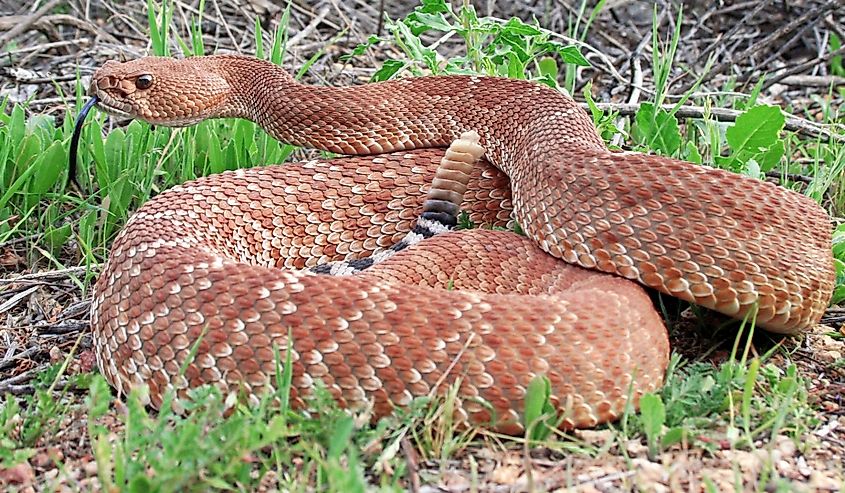
The Red Diamond rattlesnake is one of Southern California’s most visually striking snakes, recognized by its reddish-brown coloration and faint diamond pattern. It inhabits rocky hillsides, coastal sage scrub, and desert slopes, especially in Riverside and Imperial Counties. Adults can grow to nearly five feet in length and are known for their calm disposition compared to other rattlesnakes. This species is most active during the spring and early summer months, often basking near rock outcrops or trails. Although its venom is potent, it is less toxic than that of the Mojave rattlesnake. Habitat loss from urban expansion has reduced its range, prompting conservation measures to protect remaining populations. The Red Diamond rattlesnake remains a symbol of the wild, undeveloped parts of Southern California.
7. Speckled Rattlesnake (Crotalus mitchellii)
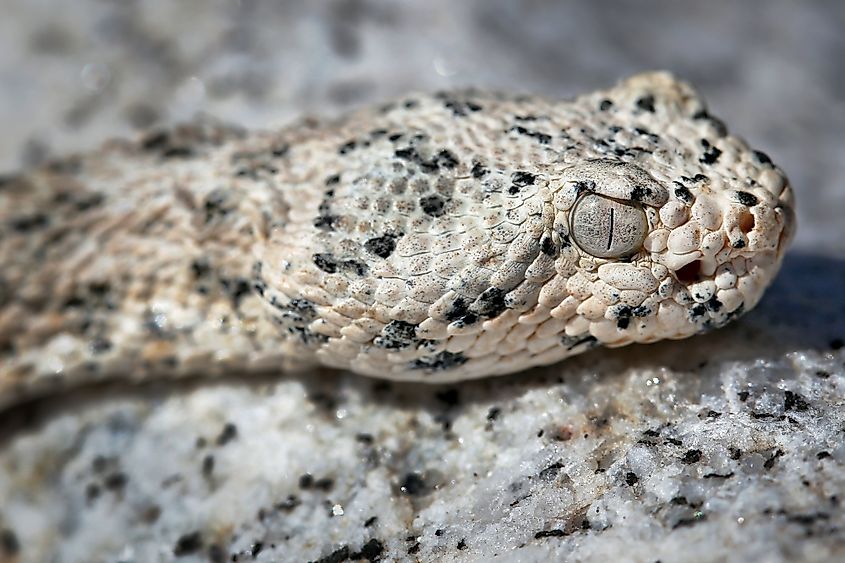
The Speckled rattlesnake is a master of camouflage, with coloration that mirrors the rocks and sands of its environment. Found across southeastern California’s deserts and rocky mountainsides, this medium-sized rattlesnake usually ranges from two to three feet long. Its color pattern varies from pale gray and tan to pinkish hues depending on the local geology. The species prefers dry, rocky habitats where it can remain hidden during the day and hunt small mammals and birds at night. Its venom is primarily hemotoxic, used to immobilize prey quickly. The Speckled rattlesnake’s adaptability to harsh desert conditions makes it one of California’s most enduring and elusive snakes.
8. Panamint Rattlesnake (Crotalus stephensi)
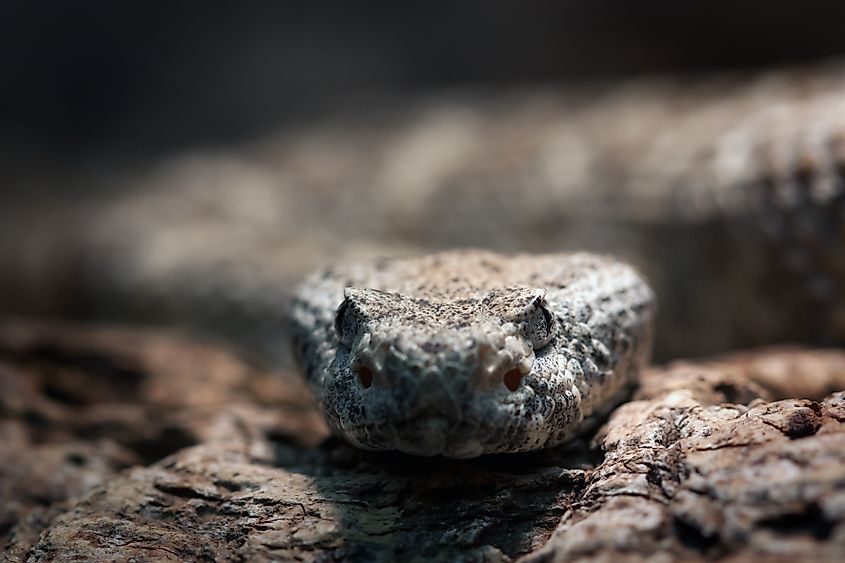
Native to the high desert and mountain regions of eastern California, the Panamint rattlesnake inhabits areas such as Death Valley and the Panamint Mountains. This species favors rocky slopes, canyons, and arid scrublands, often at elevations above 3,000 feet. Adults average two to three feet long and display muted gray or tan coloration with dark blotches, providing excellent concealment among rocks. The Panamint rattlesnake’s venom is hemotoxic but not considered particularly aggressive toward humans. It is primarily nocturnal, hunting small mammals and birds. Because of its remote habitat, it is rarely encountered, making sightings of this elusive rattler a special experience for herpetologists and nature enthusiasts alike.
9. Northern Mojave Rattlesnake (Intergrade Populations)
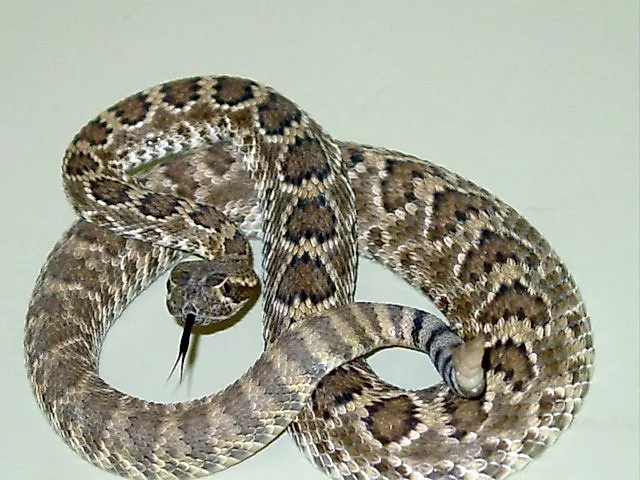
In the transition zones between the Mojave and Great Basin deserts, hybrid or intergrade populations exist where the Mojave rattlesnake interbreeds with the Western rattlesnake. These snakes exhibit a fascinating mix of physical and venom traits, sometimes displaying the Mojave’s neurotoxic venom and the Western rattlesnake’s hemotoxic composition. Their color patterns also vary widely, reflecting the blending of genetic lineages. Found mainly in northeastern California, these integrated populations provide valuable insights into the evolution of venom and adaptation among desert reptiles. While still venomous and deserving caution, these snakes are reclusive and rarely encountered outside of dedicated field studies or remote desert environments.
Have a Safe Cali-cation
Viewing local wildlife is a highlight for many travelers and is a rewarding activity you can enjoy safely. You should always keep your distance from wild animals. If you come across a venomous snake during your tour of California, keep your eyes on it, back away slowly, and do not make sudden movements. Be sure to not disturb burrows you find and watch lifting rocks or logs while in the woods, as snakes can take shelter in these. Keep watch for snakes around bodies of water like rivers and lakes, as they might be drawn to these in search of prey or finding shelter around the vegetation. Snakes are typically most active at dusk and night, so be extra careful if you are outside during those times.
Snakes are a critical part of the ecosystem as they keep rodent populations in check and are food for some species of birds and other snakes. So, let’s enjoy them from a safe distance, and as the late, great Steve Irwin would say, “Crikey, what a beautiful snake.”


